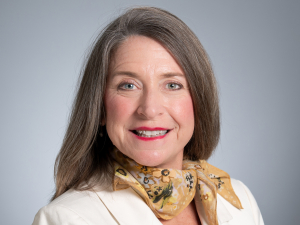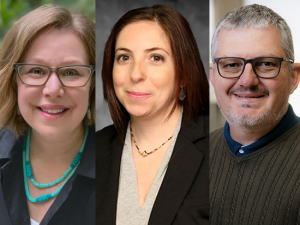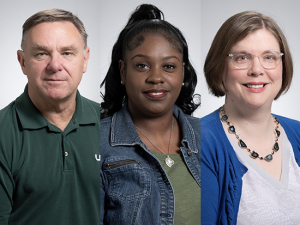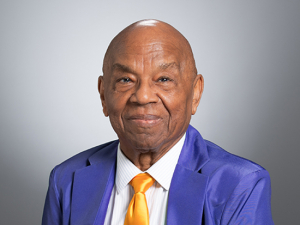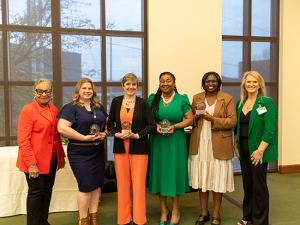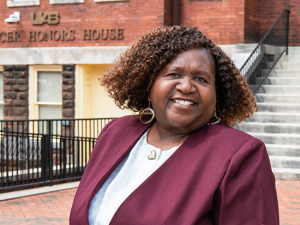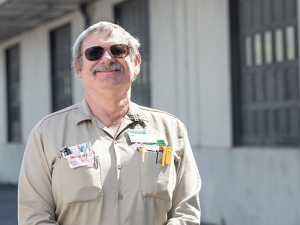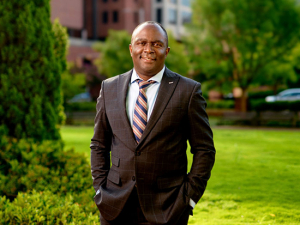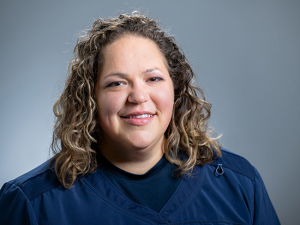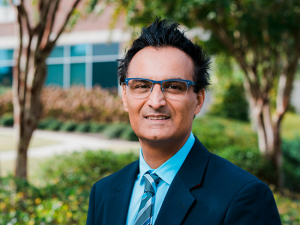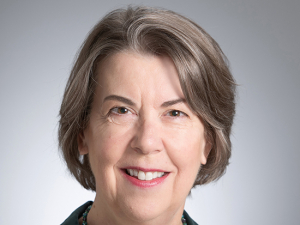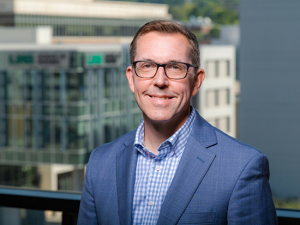Danny Welch, Ph.D., is a senior scientist in the UAB Comprehensive Cancer Center and a renowned expert in the biology and genetics of cancer metastasis — the process by which cancer cells break away from a primary tumor and enter the bloodstream or lymphatic system and spread to other parts of the body.
 Now, Welch is taking his expertise to the Susan G. Komen for the Cure Scientific Advisory Council. He recently was selected for the council, which includes more than 60 top-ranked scientists, physicians and advocates from seven nations and a wide range of disciplines. The group will help guide the organization’s extensive research program.
Now, Welch is taking his expertise to the Susan G. Komen for the Cure Scientific Advisory Council. He recently was selected for the council, which includes more than 60 top-ranked scientists, physicians and advocates from seven nations and a wide range of disciplines. The group will help guide the organization’s extensive research program.
Welch, director of UAB’s Graduate Biomedical Science Program in Cancer Biology, will serve a two-year term, which may be renewed. The council will provide scientific review for the research grants and programs the organization funds annually, and council members will help guide Komen leaders toward best-practices in cancer education and policy initiatives.
The new advisory council spans a wide range of specialties, including clinical research, laboratory research, surgery, pathology, radiation oncology, epidemiology, medical oncology, behavioral sciences, disease prevention, bioinformatics and international health. Council members in the United States will be liaisons in 21 communities across the nation.
Welch recently spoke to the the UAB Reporter about breast-cancer research and his opportunity to work directly with Komen for the Cure, the world’s largest breast-cancer awareness and research organization.
Q. How excited are you to serve on the Komen advisory council?
A. Very. Although there is a great responsibility associated with serving this position, the chance to influence research priorities is exciting. Of course, I have an agenda to promote the area of metastasis. It is disconcerting that the attribute of cancer cells causing greater than 90 percent of cancer deaths receives far less than 5 percent of government or foundation funding in the area of cancer. That statistic must change.
Being selected also is very humbling. When I read the list of colleagues on the SAC, I was, and remain, amazed that I was chosen. Each has contributed significantly to understanding and more effectively treating breast cancer. While I will bring my perspectives, I look forward to learning from each of them as well.
This is definitely not going to be an honorific position. My term on the council began July 1, and my first assignment arrived in an e-mail July 2.
Q. Why was the council created, and how is it an asset?
A. Several factors that contributed to council creation. Chiefly, Susan G. Komen for the Cure saw a need to prioritize where research funding would do the greatest good. By soliciting the input from investigators representing multiple disciplines and constituencies, the precious donations from the public would be more likely to go to those areas deemed to have the greatest overall impact on survival and quality of life. In addition, the council will play significant roles in peer review, hopefully creating a more consistent and robust scientific evaluation.
Q. Have researchers uncovered the mechanisms by which tumor cells are able to metastasize?
A. The mechanisms underlying metastasis continually are being identified. Though the focus of most research during the past 50 years has been on what has gone wrong with the tumor cells themselves, the research focus in the past four to five years has been evolving toward how tumor cells interact with normal cells. Our own research on metastasis suppressors is beginning to uncover how tumor cells respond to different environments in which they find themselves during their movement around the body.
Q. Is breast cancer more likely to metastasize than other cancers?
A. The short answer to your question is probably not. However, your question raises an important point: Cancer is multiple diseases. Even breast cancer can be subdivided into at least five subtypes. The predisposition to metastasize for those different types of breast cancer varies widely. Some types rarely metastasize, whereas others frequently metastasize.
Q. Have researchers determined why breast-cancer frequently metastasizes to the bones?
A. This is an area of active interest for which the field still has very few answers. The bone is a very rich environment with regard to growth factors and as the depot for generating the immune system. Breast-cancer cells take advantage of this environment. How they know to do so still is a mystery. Perhaps more troubling is how the tumor cells that arrive in the bone manipulate the environment to benefit the tumor cells. One of the advantages of being at UAB is the juxtaposition of a Comprehensive Cancer Center and a center for bone research (Center for Metabolic Bone Disease). The answer to the questions regarding bone metastasis will come by bridging research silos and integrating the findings on both disciplines.
Q. Why is your pathology lab positioned to lead in uncovering secrets of this disease?
A. Being a leader is dependent upon God’s grace, working with bright, energetic, hard-working, motivated colleagues, students, fellows and members of the community and a measure of plain old good luck. Throughout my career, I have been fortunate to work with some of the best people in the world. We keep each other focused on the priority — research that will provide knowledge that will improve the survival and quality of life for patients with cancer. When we all work for the same goal that is beyond our own self-interest, then there is synergy and we all succeed.
Q. Will your service with the council enhance the research work in your lab?
A. Absolutely. The benefits will occur at two levels. First, we will be able to use Komen funds to initiate some higher-risk projects. Second, I will be able to interact even more frequently with some of the brightest minds in the cancer research community. I am confident our discussions will lead us all toward more creative and higher-quality science that will hasten the pace of discovery.
